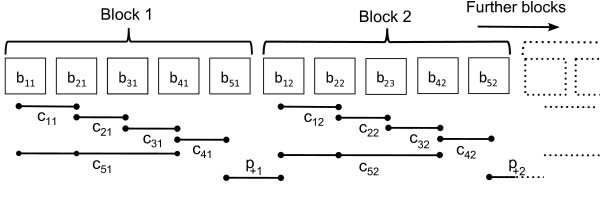Figure 2.
Block structure of encoded read. A read partitioned into blocks of five bases, with block i containing bases b1i b2i b3i b4i b5i , showing how the two-base-encoding and ECC color calls are split into five ‘data’ colors c1i c2i c3i c4i c5i , from which the block can be called, and a ‘parity’ color ( p + i ) which straddles the block and its downstream neighbour. The data colors are used to determine the nucleotide sequence of the blocks and the parity color is used to detect whether an error has occurred. Note that the data colors are a mixture of both color streams, with the parity color coming from the color stream of the code.

